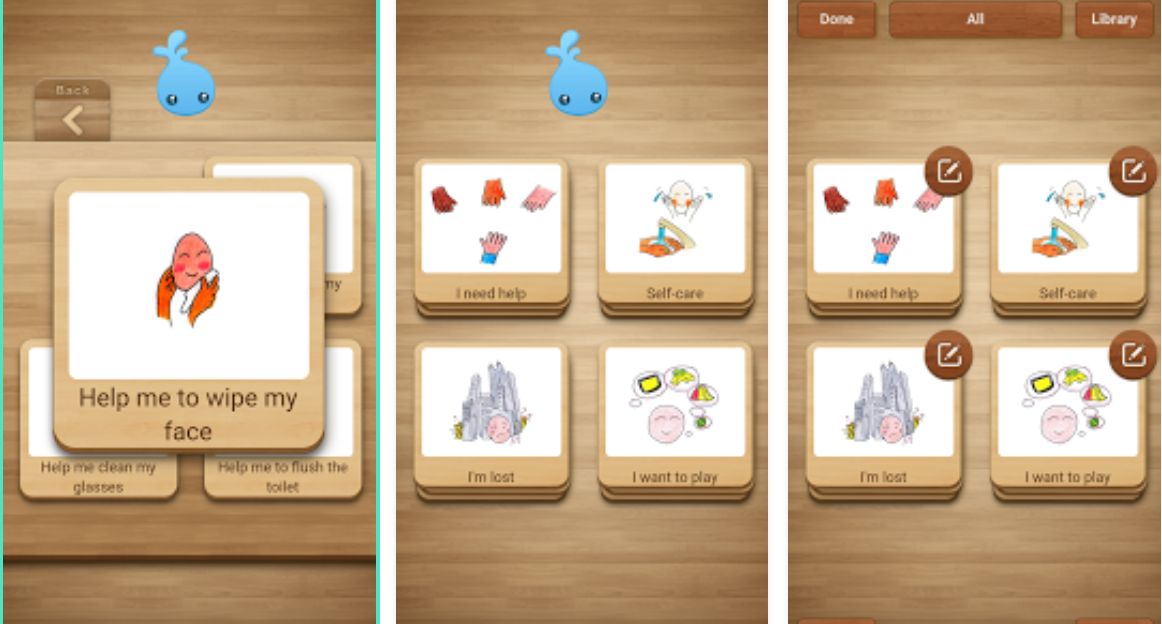 An event held at The Barnsley Hospital Education Centre was an interesting morning concerning the translation of a core vocabulary system developed by Professor Jens Boenisch and his team from the University of Cologne. The use of core vocabularies on a series of personalised communication charts have been translated into English from the German originals and can be provided in a folder that offers a way of encouraging the growth of language and literacy skills. Some members of the Tawasol symbols team were lucky enough to meet Professor Boenisch in 2016 when they discussed the possible translation of the system into Arabic. The visit was reported in our blog with an image of the original communication folder
An event held at The Barnsley Hospital Education Centre was an interesting morning concerning the translation of a core vocabulary system developed by Professor Jens Boenisch and his team from the University of Cologne. The use of core vocabularies on a series of personalised communication charts have been translated into English from the German originals and can be provided in a folder that offers a way of encouraging the growth of language and literacy skills. Some members of the Tawasol symbols team were lucky enough to meet Professor Boenisch in 2016 when they discussed the possible translation of the system into Arabic. The visit was reported in our blog with an image of the original communication folder
 Techcess with Bart Noe (Jabbla) have developed a way of working with these charts on speech generating devices that speed access to symbols and therefore the creation of phrases and sentences that are read aloud with speech synthesis. The SCORE system has been built to work with Mind Express on Windows tablet AAC systems and with the present configuration users can choose to use Symbol Stix, PCS or Widgit Symbols. MindExpress is available as a demo for 60 days and SCORE will be available for 30 days. The system is being sold for £228 as a folder and £220 as a vocabulary that works with MindExpress.
Techcess with Bart Noe (Jabbla) have developed a way of working with these charts on speech generating devices that speed access to symbols and therefore the creation of phrases and sentences that are read aloud with speech synthesis. The SCORE system has been built to work with Mind Express on Windows tablet AAC systems and with the present configuration users can choose to use Symbol Stix, PCS or Widgit Symbols. MindExpress is available as a demo for 60 days and SCORE will be available for 30 days. The system is being sold for £228 as a folder and £220 as a vocabulary that works with MindExpress.
You may have noticed that colour coding has been used with the symbols. In this case the a modified version of the Fitzgerald key colour system has been used to encourage correct sentence structure.
“Modified Fitzgerald Key
Blue: Adjectives
Green: Verbs
Yellow: Pronouns
Orange: Nouns
White: Conjunctions
Pink: Prepositions, social words
Purple: Questions
Brown: Adverbs
Red: Important function words, negation, emergency words
Grey: Determiners ” Praactical AAC . Another example of the code is shown below.

The SCORE symbol layout system illustrates how important it is to aim for the smallest number of keystrokes that can be achieved to select a required word. So high frequency words can be reached with one stroke, most are two strokes away and fringe words should not be more than four key strokes away. When working in different languages (for bilingual situations) it is important to not only have the core words within easy reach, but to also be aware of word placement within phrases and sentences with correct use of grammar. This means that charts may have parts of speech appearing in different places depending on the language being used.
The SCORE vocabulary allows for the use of natural language, with a full range of correct grammar, to create sentences with both symbols and alphabetical options so suits both children and adults. Users can adapt charts with additional symbols and layouts, but it is important to maintain consistent word/symbol positioning for individual languages, so that predictable motor patterns can be developed to aid automaticity and speed communication.



